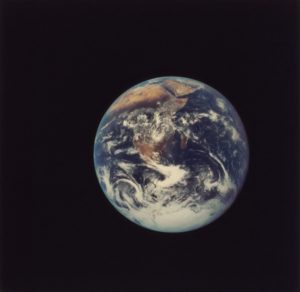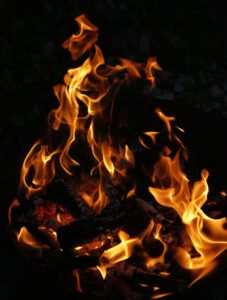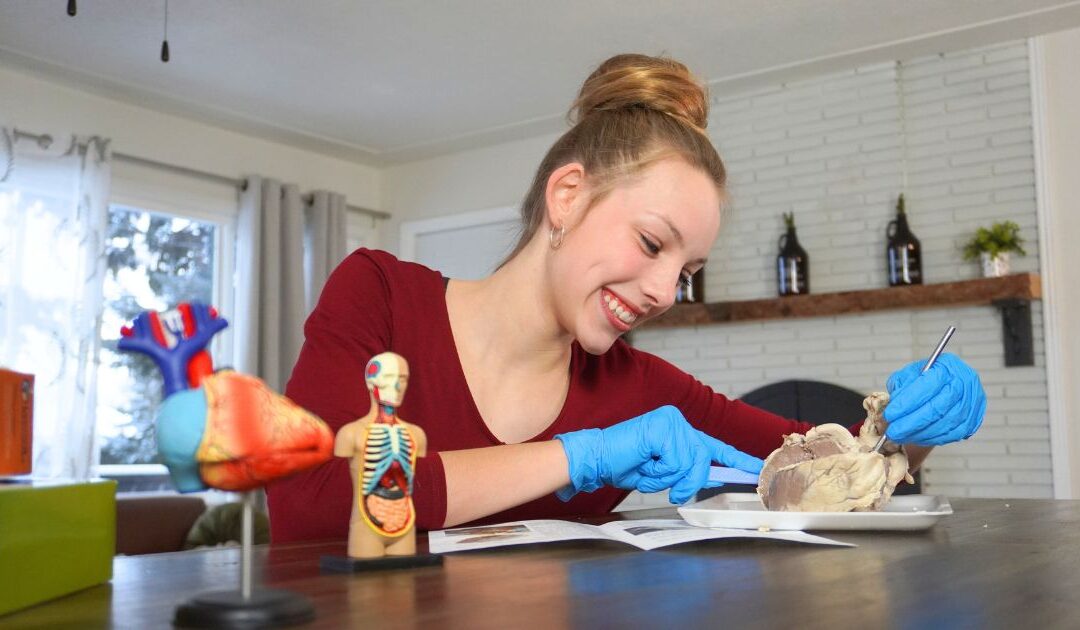What are the FOUR Elements?
Science Lesson: Earth, Water, Air, and Fire
The ancient Greeks believed that there were four elements that everything was made up of: earth, water, air, and fire. This theory was suggested around 450 BC, and it was later supported and added to by Aristotle.
(Aristotle also suggested that there was a fifth element, aether, because it seemed strange that the stars would be made out of earthly elements. He would be surprised to learn that they are in fact made up of many elements found on earth, and are so hot they could be said to be on fire all the time!)
The idea that these four elements – earth, water, air, and fire – made up all matter was the cornerstone of philosophy, science, and medicine for two thousand years (kids love to ask questions on the elements).
The elements were “pure” but could not be found in that state on earth. Every visible thing was made up of some combination of earth, water, air, and fire.
The four elements were even used to described the four temperaments a person could have, and Hippocrates used the four elements to describe the four “humors” found in the body. These theories stated that the temperaments and humors needed to be in balance with each other in order for a person to be well both mentally and physically.
While we do know now that these previous theories are false, in a way the four elements do align with the four states of matter that modern science has agreed on: solid (earth), liquid (water), gas (air), and plasma (fire).
Although the Greeks believed that the four elements were unchanging in nature, everything was made up of different elements, which were held together or pushed apart by forces of attraction and repulsion, causing substances to appear to change. This is similar to what really happens with elements and all molecules at an atomic level.
Matter is anything that has mass and volume and is made up of atoms, which are the smallest particles of matter. Bonding occurs among atoms to make larger molecules. (Click here to learn more about bonding.) Mass is how much matter is in an object whereas volume is how much space the object takes up. How atoms are arranged in an object determines whether it is a solid, liquid, gas, or plasma.
- In a solid, the atoms are packed closely together in an ordered pattern and cannot move, giving a solid a definite volume and shape. Examples of solids include rocks, wood, metal, and ice.
- In a liquid, the atoms are close together but can move around each other. This allows a liquid to take the shape of whatever container it is placed in. Examples of liquids include room temperature water, room temperature mercury, and hot lava (molten rock).
- In a gas, there is more space between atoms. The atoms can move so freely that if the gas is not trapped in a container, the atoms will diffuse and spread throughout the atmosphere. Examples of gases are oxygen and nitrogen (in the air we breathe), helium, and steam (water vapor).
- In a plasma, the atoms are spaced similarly to gas except there is so much energy in a plasma, the atoms actually split into smaller pieces. Plasmas are able to carry an electrical current and generate magnetic fields. Examples of plasmas include lightning, solar wind, the sun, fluorescent lights, and neon signs.
Temperature plays an important role in how the atoms are aligned in a substance. As a general rule of thumb, the colder the matter is, the closer the atoms are to each other, and the warmer the matter is, the farther the atoms are apart. Of course, the temperature at which a matter is a solid or a liquid depends on what substance the matter is made of. For example, water at room temperature is a liquid whereas a rock at room temperature is solid.
Science Lesson: The Four Elements in Everyday Life
First Element: Earth

The earth is full of a wide variety of rocks and minerals which provides the soil to grow vegetation and support life. The two most common elements in the earth’s crust are oxygen (46%) and silicon (28%). Because of this, the most abundant mineral in the earth’s crust is silica (silicon dioxide). More commonly known as sand, silica is a major component of glass. How can glass be made out of sand? Interestingly, when silica is heated, it melts and becomes glass, hardening as it cools.
Rich deposits of metal ores are found throughout the earth’s crust. While these metals are used in the production of machinery, tools, buildings, and weapons, straight out of the earth these metals are pretty useless. Fire is used to heat, refine, and shape metal so that machines, hammers, and support beams can be made from it.
It is easy to think of the earth as being solid dirt through and through, but in reality it is made up of several layers. While many of these layers are solid, the layer that surrounds the core is called the liquid outer core. It is so hot inside the earth that the rock at this layer has actually melted. The solid inner core is just as hot as the liquid layer surrounding it, but the pressure on the inner core is so great that scientists believe it is “pressed” into a solid.
Second Element: Water
Water has many unique properties. The chemical formula of water is H20, meaning it is made of two hydrogen atoms bonded to one oxygen atom. The hydrogen atoms each attach to one side of the oxygen atom and have a positive charge whereas the oxygen atom has a negative charge. This polarizes the water molecule, much like a magnet, giving a water molecule positive and negative ends.
Since opposite charges attract, water molecules tend to “stick” together. This gives water surface tension and allows objects, such as paperclips, to float on it.
While it can’t dissolve everything, water is known as the universal solvent because it can dissolve more substances than any other liquid. It can dissolve salt, sugar, acids, alkalis, some gases, and organic material.

Water traveling through your body or through the ground takes chemicals, minerals, and nutrients with it. Water’s ability to dissolve substances helps keep the planet healthy. For more than a century, the burning of fossil fuels has pumped large amounts of carbon dioxide (CO2) into the atmosphere. The water in oceans have absorbed about half of this CO2 by dissolving the gas from the air and processing it by sea vegetation.
Water has a high specific heat index, meaning that it takes a lot of energy to change its temperature. This is essential for life to survive on a planet. The abundance of water on the earth keeps the planet in a very short but comfortable temperature range. The average surface temperature of the earth is 59 ° F with the highest recorded temperature 135.9 ° F and the lowest recorded temperature -128.6 ° F.
To compare, it would seem logical that Mercury, the closest planet to the sun, would stay really warm on all surfaces of the planet, regardless if it was facing the sun or not. However, while the surface facing the sun does reach very warm temperatures (up to 800 ° F), the surfacing facing away from the sun drops to a chilly -280 ° F. Mercury’s lack of water is responsible for this drastic temperature change because the dry material that makes up its surface cannot hold heat like water does.
To experience for yourself how well water does keep temperature from drastic fluctuations, pay attention to the change between daytime and nighttime temperatures the next time you visit a maritime (near the ocean) or desert climate. You’ll probably notice there is little to no temperature change near the ocean, whereas in the desert there is a significant change in daytime and nighttime temperatures.
This high specific heat index also helps water put out fire by cooling the fuel surfaces that the fire is burning, removing the heat needed for the fire to burn. Water also smothers a fire by preventing it from getting the oxygen it needs to burn.
Third Element: Air
Air was considered a “pure” element, but in fact the air that’s all around us is made up of a variety of gases: primarily nitrogen and oxygen, with almost 1% argon and even smaller amounts of carbon dioxide and other elements such as krypton and helium. The composition of air is just right for life on Earth, though.

We use a lot of the oxygen we get from the air, then breathe out carbon dioxide – which plants need to manufacture their food through photosynthesis. Plants in turn give off oxygen during photosynthesis.
Although air is invisible (and most of the time we forget it is even there), it does take up space, it has volume, and it exerts pressure. This can be seen when you take an “empty” glass, turn it upside down, and try to push it down to the bottom of a sink full of water.
(You can see how air expands when heated and shrinks when cooled with this egg-in-a-bottle project.)
If the glass was truly empty, the water would easily fill the inside of the glass. But air is in there, and only a small amount of water can enter the glass. The air in the glass was compressed, giving the water some space that was previously occupied with air.
It is a good thing that air fills empty space because air all around us actually presses down on us all the time. We would collapse under the weight of the air, except air is also inside us and exerts pressure that balances out the pressure exerted by the outside air.
Fourth Element: Fire
How does fire work? It’s closely linked to air. Fire needs three things in order to exist: oxygen, fuel, and heat.
The intensity of a fire varies because it is dependent on the oxygen, fuel, and heat available to it. When all three of these things are in a controlled situation, such as in candles or a campfire, fires are considered helpful. But when one or more of these things are not controlled, such as in a wildfire or a burning building, fires can easily become very dangerous.
To extinguish a fire, the oxygen, fuel, or heat needs to be removed. “Smothering” a fire by placing a blanket or dirt on it works because the fire goes out without oxygen. The earth provides an abundance of fuel in the form of wood and fossil fuels such as coal. When the fuel is removed, the fire has nothing left to burn and is extinguished. Water often serves as an effective cooling source by removing the heat from a fire. This is seen when hot lava from an erupting volcano enters the ocean or when a bucket of water is dumped on a campfire.

Fire creates light, heat, and smoke by a rapid chemical reaction called combustion. Smoke is the result of the incomplete combustion (burning) of a fuel. Particles that were not burned become suspended in the air. Smoke is often dangerous because it contains harmful gases that can poison a person who inhales too much smoke.
You might be surprised to know that our bodies also use “combustion” to produce energy from oxygen and food through metabolic processes. We need a steady supply of oxygen to keep our bodies functioning normally; if there’s too little oxygen in the air, we’ll suffocate. At the same time, we can be thankful there’s not more oxygen in the air, or the chemical reactions in our bodies would speed up, causing us to soon “crash and burn”!
Too much oxygen in the air would also increase the risk of fires on the earth. Since nitrogen and argon are not very reactive, air is pretty safe for us.
Science Projects: Exploring The Four Elements
Make a Fire Extinguisher
In order to put out a fire, one of three things must be removed from it: heat, fuel, or oxygen. Knowing this, firefighters don’t always use water to put out a fire.
What You Need:
- Empty soda bottle
- 5 tablespoons of vinegar
- 1/2 tablespoon of baking soda
- Tea light candle
What You Do:
1. Light the candle.
2. Pour the vinegar into the bottle and add the baking soda. (You may want to use a funnel.) The mixture should fizz.
3. Hold the bottle sideways over the lighted candle, making sure no liquid escapes. What happens to the flame?
What Happened:
The baking soda and vinegar react to make carbon dioxide, a gas that is heavier than oxygen. As it “pours” out of the bottle, it pushes the lighter oxygen away from the candle. The fire, now deprived of oxygen, can no longer burn.
Traveling Nutrients
Water is often called the Universal Solvent because it can dissolve more substances than any other liquid, often carrying these dissolved particles with it. When water travels through soil, nutrients (food) and dissolved particles travel with the water to be deposited somewhere else. Here is an experiment to visually demonstrate how this process happens.
What You Need:
- 1/2 cup dry soil
- 1/2 teaspoon blue powdered tempera paint
- Funnel
- Wide-mouthed jar (that the funnel can rest in)
- Coffee filter
- Cups or containers
- Water
- Measuring cup
What You Do:
1. Mix the dry soil and tempera paint thoroughly. Place the funnel in the jar and place the coffee filter in the funnel. Pour the soil mixture into the funnel.
2. Slowly pour 1/2 cup water into the funnel, watching as the water runs out of the funnel into the jar. Notice the color of the water.
3. Remove the funnel from the jar and pour the water into a cup or container. Replace the funnel over the jar, with the coffee filter full of sand still in place.
4. Repeat steps 2 and 3 with a fresh 1/2 cup of water several times, saving the water in a new cup after each pouring.
What Happens:
You’ll notice that when the first half cup of water went through the soil, it came out as a very dark blue color. However, the water came out lighter with each additional cup. Eventually, the water traveling through the soil came out clear in the jar. Did you count how many half cups of water it took to make the water run clear?
The tempura paint in this experiment represents the nutrients and dissolved particles found in the soil. Water is a very efficient transporter of particles as evidenced by the color of water as it was poured through the soil. The soil started with a relatively high amount of nutrients and particles in it – the tempura paint. The water flowing through the soil was able to pick up a large proportion of the “nutrients” and carry them with it through the funnel. Each subsequent pouring of water picked up more nutrients. With each pouring, the remaining nutrients became less and less until the water ran clear and there were no more nutrients left to travel with the water.
Noteworthy Scientist: George Gabriel Stokes, 1819-1903
George Gabriel Stokes was an accomplished British mathematician in the 19th Century, but throughout his career, he emphasized the importance of experimentation and problem solving rather than focusing solely on mathematics.
By experimenting and applying mathematics to physics, Stokes came up with a law that describes the movement of a solid through a liquid or a gas. Known as Stoke’s Law, this law of viscosity established the science of hydrodynamics. Stoke’s Law explains cloud motion, wave motion, and the resistance of water to ship movement.
Most of Stoke’s work revolved around waves (sound, light, and water) and how they move through various mediums, such as water and gas. He experimented with how wind affects the intensity of a sound and how the intensity is influenced by the type of gas the sound waves travel through. He named and explained fluorescence and investigated the wave theory of light. He also worked on understanding the different colored bands that could be seen in a spectrum and made significant contributions to what we know about light and optics.
Stokes is often compared to Sir Isaac Newton because there are numerous parallels between Stoke’s life and Newton’s life: both had breakthrough discoveries, developed laws of motion, investigated light and optics, held the same prestigious Lucasian Chair of Mathematics at the University of Cambridge, and served in Parliament.
Fabulous Facts
Earth
Most gemstones contain several elements. The exception? The diamond. It’s all carbon.
Which of the 50 states has never had an earthquake? North Dakota.
The Earth’s equatorial circumference (40,075 km) is greater than its polar circumference (40,008 km).
The Earth is estimated to weigh 6.6 sextillion tons, or 5.97 x 1024 kg. To compare, a million is a 1 with 6 zeros following it – a sextillion is a 1 with 21 zeros following it. (1,000,000,000,000,000,000,000)
Water
An inch of rain water is equivalent to 15 inches of dry, powdery snow.
The deepest part of the ocean is 35,813 feet (10,916 meters) deep and occurs in the Mariana Trench in the Pacific Ocean. At that depth the pressure is 18,000 pounds (9172 kilograms) per square inch.
The human brain is 80% water.
Air
8-12 miles above the earth, rivers of air known as jet streams move above us. Several miles wide and 1-2 miles deep, these currents of air can have wind speeds as high as 250 miles per hour. To contrast, the strongest hurricanes have wind speeds between 150-200 miles per hour.
Fire
A bolt of lightning is about 5,000 °F (~2,800 °C).
The center of the Sun is about 27 million degrees Fahrenheit (15 million °C).
Elements combined
When hydrogen burns in the air, water is formed.
Oxygen is the most abundant element in the Earth’s crust, waters, and atmosphere (about 49.5%).
Sound travels about 4 times faster in water than in air.
Wind and water both cause erosion to the earth, moving large amounts of sand and rock to tear down mountains and build new structures.





